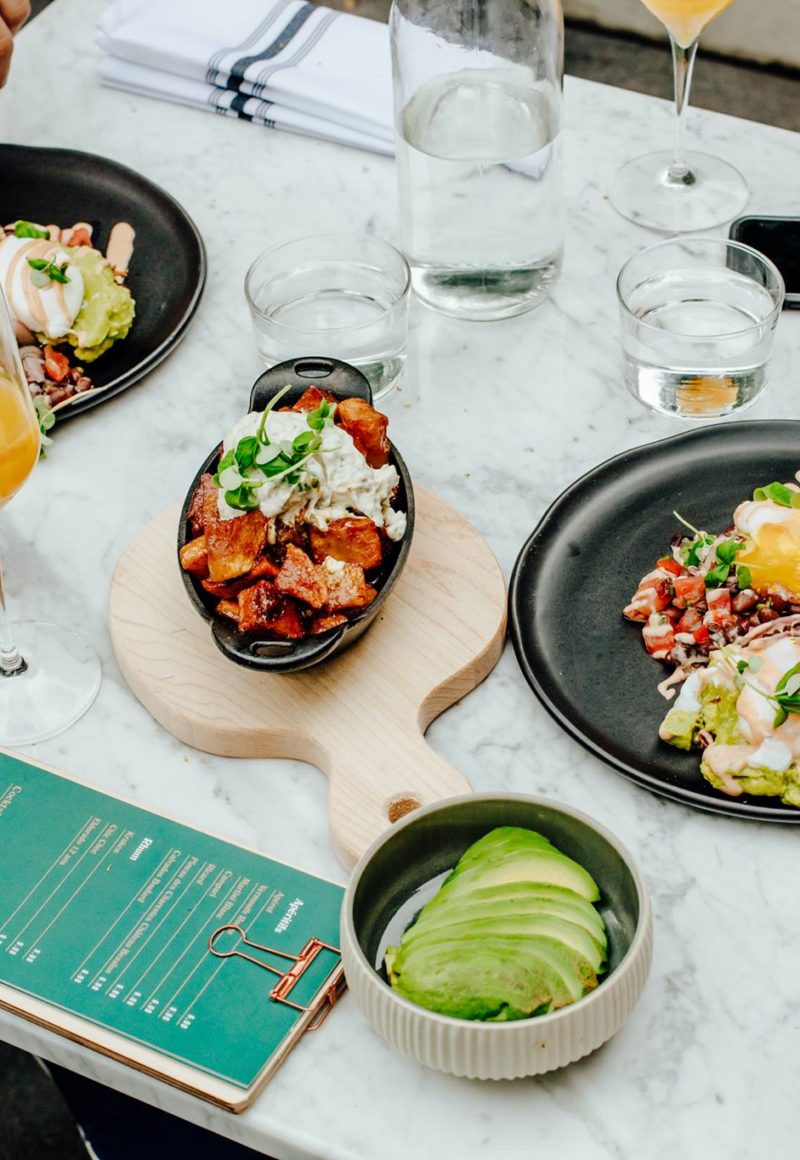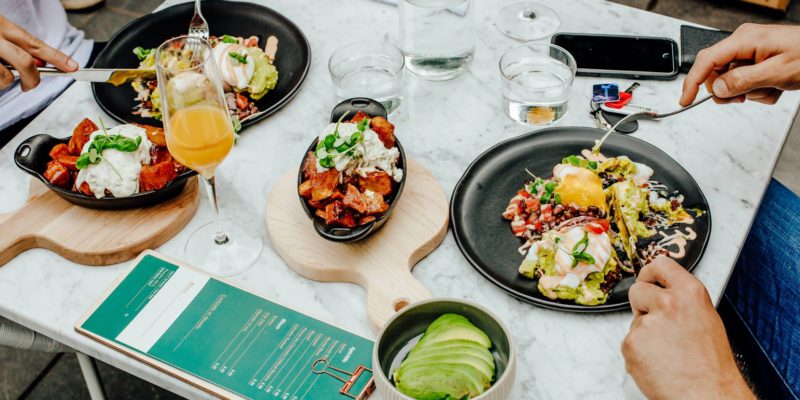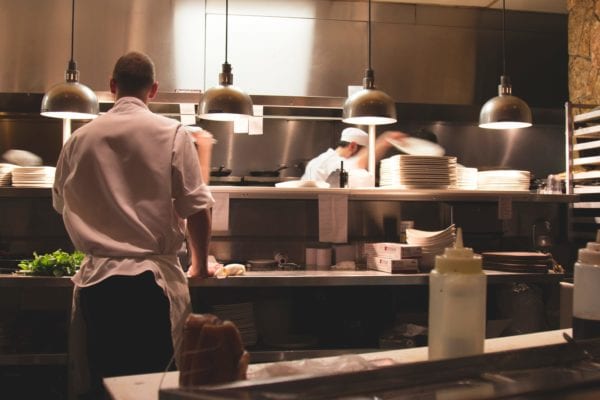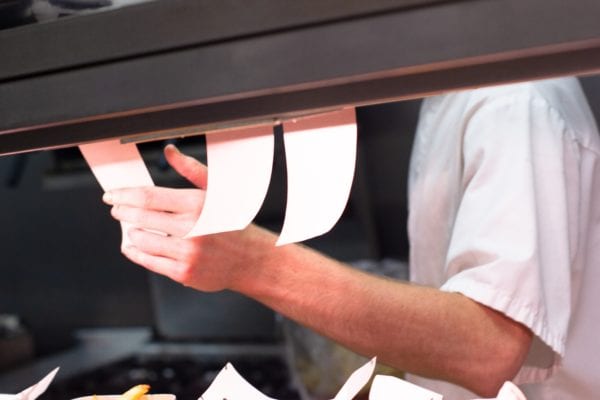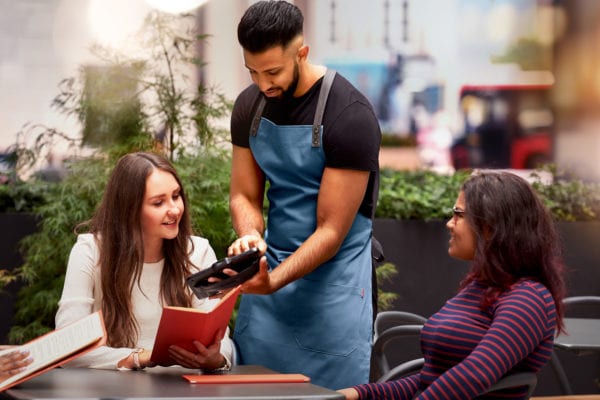Skift Take
For operators, it's a way to avoid menu price hikes and equalize pay between the cooks and servers. For consumers, it's just a confusing price increase.
— Erika Adams
Some New York City restaurateurs are pleading with local government to lift current regulation that stipulates that restaurants cannot add any general surcharges or extra fees to checks.
As it stands right now, local restaurants are only allowed to charge direct food and beverage costs to the bill (with some clearly spelled-out exceptions, like adding a charge if two diners want to split the check). The regulation is governed by the New York City Department of Consumer Affairs.
If the ban is lifted, restaurant operators will be able to apply surcharges to checks at their own discretion. There’s no regulation or limit on how the surcharge is determined; it’s up to the individual operator to decide if and how they’ll implement the fee.
Why Are Restaurants Asking For This?
Andrew Rigie, the executive director of the New York Hospitality Alliance, explained at a public hearing on the matter that based on conversations with local operators, the surcharge will most likely be used in one of two ways. Either restaurants will implement the fee as an extra three to four percent charge at the end of the check, or charge a much larger fee but eliminate tipping.
Tamala Boyd, the general counsel for NYC’s Department of Consumer Affairs, blasted the proposed legislation for being deceptive to consumers.
“Allowing businesses to mask price increases as ‘surcharges’ takes advantage of consumers’ perception that they are getting a deal when, in fact, they are not,” Boyd argued. Instead, why don’t restaurants simply raise their menu prices?
There was nearly an audible groan among the handful of restaurateurs who had shown up to testify in support of adding the surcharge. “We have raised our menu prices to the limit of what the market will bear,” said Keith Treyball, the president of E2 Hospitality, which includes over a dozen restaurants including popular fast casual vegan spot By Chloe. “But those increases are negated by the average guest ordering less and spending the same amount as before.”
Susan Povich, the owner of the Red Hook Lobster Pound, detailed in a written testimony how the cost of one of their most popular menu items, the lobster roll, has gone from $13 to $20 over the past nine years. “Prices are the number one complaint that our guests have,” Povich wrote. “Just look at our Yelp reviews.”
Ben Schneider, co-owner of The Good Fork, a 12-year-old full service restaurant in Brooklyn, said that the surcharge would go a long way in helping to equalize wages between untipped workers (cooks and dishwashers) and tipped workers (servers, bussers, food runners, etc.). Because the fee can be applied in any way that an operator sees fit (unlike tips, which must go to the tipped worker), it’ll be a way to direct some much-needed extra revenue to boost back-of-house wages.
“We are not trying to line our pockets with this proposed administrative fee,” Schneider said. “We are simply trying to catch up with the rest of the country, improve the industry, and, frankly, stay in business.”
Consumer Concerns
From the diner perspective, it’s not a perfect fix. Two restaurants on the same block could charge wildly different surcharges if they wanted to. One could implement a surcharge while the other doesn’t. When customers get the final bill there’s still going to be some sticker shock involved, which might have an impact on their dining behavior even if menu prices aren’t increased.
Tipping becomes even more confusing: if the check is $60 plus a $7 surcharge, which amount do customers tip on? Are servers ready to explain that the surcharge does not go towards their tips — but please, do make sure to still tip?
Potential Results
Across the country, surcharges are already allowed (as well as in the rest of New York state) and it’s not always the saving grace that some restaurateurs were hoping for, especially for those who chose to implement the service fee in place of tipping.
In Minneapolis, Minnesota, where the general minimum wage is on its way to $15 an hour and the tipped minimum wage was eliminated last year, a few restaurants implemented an eighteen percent surcharge to compensate for the increases in labor costs. It didn’t go over well.
“We’d get 1-star Yelp reviews that would say ‘food, drinks, experience, everything was amazing and then I got the bill and there was an 18 percent service charge on it. One star'” one restaurateur told the Minneapolis Star Tribune. He rolled back the surcharge after only a couple of months and reverted back to optional tipping. Another restaurant tried to charge an 18 percent service fee and still leave a line for tips on the check, but rolled it back after six months due to so many complaints.
Granted, not every surcharge would be that high. In Colorado, restaurants that implemented a two to three percent service charge to mitigate rising labor costs have been able to manage the occasional angry Facebook comment. In San Diego, California, customers largely accepted small surcharges, but restaurateurs saw it as only a temporary fix as operating costs continue to rise.
Shifting consumer psychology around pricing is extremely difficult, and as long as the cost of running a restaurant keeps climbing, operators are going to fight for every possible way to scrape together more revenue. “[Surcharges] are not a fix-all, but it is one tool commonly used by many other industries that may help some restaurants and their workers,” Rigie told council members at the hearing. “If restaurateurs believed they could just continue to raise menu prices, they would, and we wouldn’t be having this conversation.”

